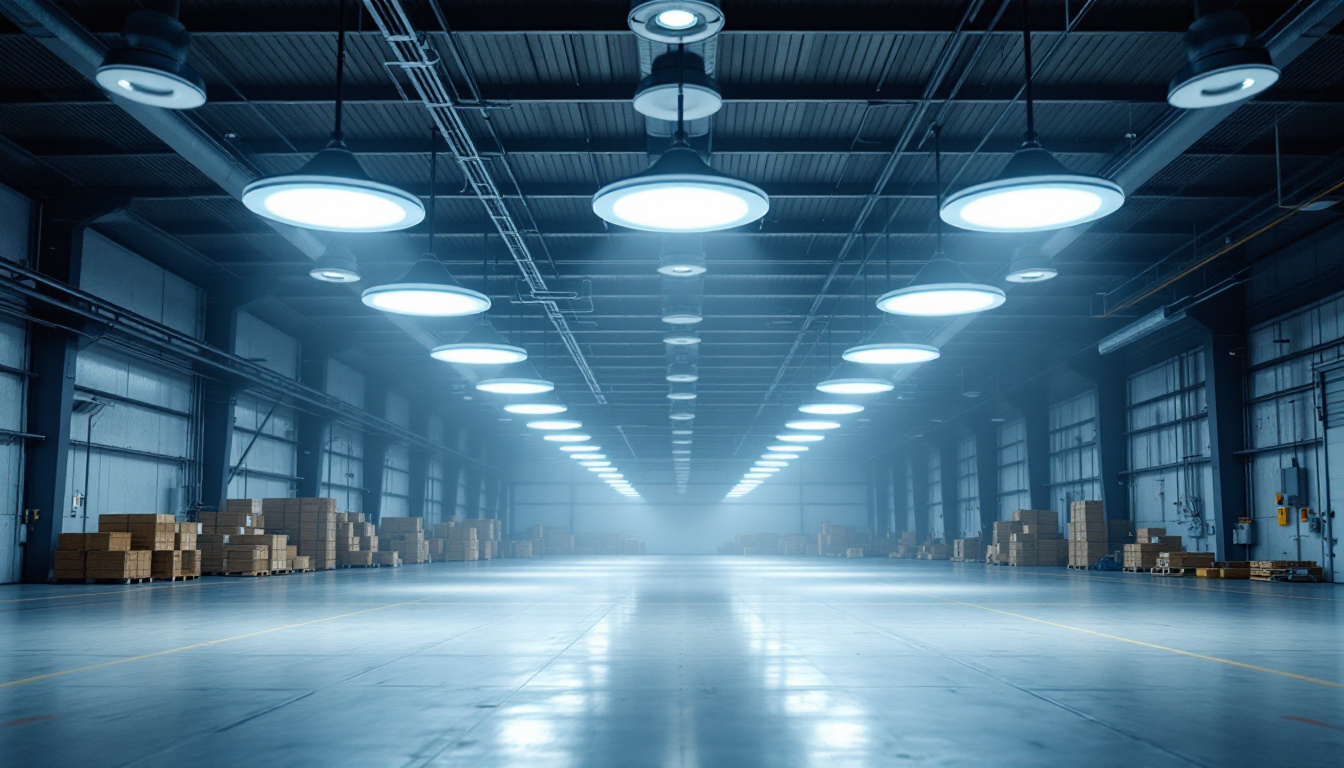
High-intensity discharge (HID) lighting systems are widely used in various applications, from street lighting to industrial facilities. One of the critical components of these systems is the HID lighting ballast. Understanding the function, types, and installation of ballasts is essential for lighting contractors looking to optimize their projects and ensure client satisfaction. This article provides expert advice on HID lighting ballasts, covering everything from selection to troubleshooting.
HID lighting ballasts play a crucial role in the operation of HID lamps. They regulate the electrical current flowing to the lamp, ensuring that it operates efficiently and effectively. Without a proper ballast, HID lamps may not ignite or could fail prematurely, leading to increased maintenance costs and reduced client satisfaction.
The primary function of an HID ballast is to provide the necessary starting voltage and regulate the current during operation. When the lamp is first turned on, the ballast generates a high voltage to initiate the arc between the electrodes. Once the lamp is lit, the ballast then limits the current to prevent damage to the lamp.
Additionally, ballasts help stabilize the lamp’s operation by compensating for fluctuations in voltage and current. This stabilization is vital for maintaining consistent light output and extending the lifespan of the HID lamp. The design of the ballast also impacts the overall performance of the lighting system, influencing factors such as energy consumption and heat generation. A well-functioning ballast not only enhances the lamp’s efficiency but also contributes to a more sustainable lighting solution.
There are two main types of HID ballasts: magnetic and electronic. Each type has its unique characteristics, advantages, and disadvantages, making it essential for lighting contractors to understand their differences.
Magnetic ballasts are the traditional type of ballast used in HID lighting systems. They consist of a transformer, inductors, and capacitors, which work together to regulate the electrical current. These ballasts are typically larger and heavier than their electronic counterparts, and they operate at a lower frequency.
While magnetic ballasts are known for their durability and reliability, they can be less energy-efficient compared to electronic ballasts. Additionally, they may produce a noticeable flicker and generate more heat during operation. This heat generation can lead to increased operational costs, particularly in larger installations where multiple ballasts are used. Furthermore, magnetic ballasts often require more frequent maintenance due to their mechanical components, which can wear out over time.
Electronic ballasts are a more modern alternative to magnetic ballasts. They use electronic circuits to regulate the current and voltage supplied to the lamp, resulting in improved efficiency and performance. Electronic ballasts operate at higher frequencies, which can lead to a more stable light output and reduced flicker.
These ballasts are typically smaller and lighter than magnetic ballasts, making them easier to install. However, they may be more sensitive to power surges and require proper installation to avoid potential issues. Moreover, electronic ballasts often come equipped with advanced features such as dimming capabilities and integrated controls, allowing for greater flexibility in lighting design. This adaptability makes them an attractive option for various applications, from commercial spaces to outdoor lighting, where energy efficiency and performance are paramount.
Choosing the right HID ballast is crucial for ensuring optimal performance and longevity of the lighting system. Several factors should be considered when making this decision, including lamp type, wattage, and application requirements.
Different types of HID lamps, such as metal halide, high-pressure sodium, and mercury vapor, require specific ballasts designed for their unique characteristics. It is essential to select a ballast that is compatible with the lamp type to ensure proper operation and avoid potential issues.
For instance, metal halide lamps require a different ballast than high-pressure sodium lamps. Using the wrong ballast can lead to poor performance, reduced efficiency, and even lamp failure. Additionally, there are electronic and magnetic ballasts available for different lamp types, with electronic ballasts generally offering better energy efficiency and improved performance, such as faster start times and reduced flicker.
The wattage of the HID lamp is another critical factor in selecting the appropriate ballast. Each ballast is rated for a specific wattage range, and using a ballast that does not match the lamp’s wattage can result in inefficiencies and potential damage.
It is essential to consult the manufacturer’s specifications to determine the correct wattage rating for both the lamp and ballast. This ensures optimal performance and extends the lifespan of the lighting system. Moreover, it is worth noting that some ballasts are designed to accommodate multiple wattages, providing flexibility for applications where lamp types may change or where future upgrades are anticipated.
Different applications may have unique requirements that influence the selection of an HID ballast. For example, outdoor applications may require ballasts with higher moisture resistance, while indoor applications may prioritize energy efficiency.
Understanding the specific needs of the project will help contractors choose the most suitable ballast, ultimately leading to better performance and client satisfaction. Furthermore, considerations such as ambient temperature, altitude, and the presence of contaminants in the environment can also affect ballast performance. Selecting a ballast that can operate effectively under varying conditions ensures reliability and minimizes maintenance costs over time, making it a vital aspect of any lighting project.
Proper installation of HID ballasts is crucial for ensuring the longevity and efficiency of the lighting system. Here are some essential tips for lighting contractors to consider during installation.
Each ballast comes with specific installation instructions provided by the manufacturer. Following these guidelines is essential to ensure proper operation and avoid potential issues. This includes wiring diagrams, mounting instructions, and any necessary safety precautions.
Contractors should take the time to read and understand these instructions before beginning the installation process. This can save time and prevent costly mistakes down the line.
Proper wiring is critical for the safe and efficient operation of HID ballasts. Contractors should ensure that all connections are secure and that the wiring is rated for the specific voltage and current requirements of the ballast and lamp.
Additionally, it is essential to use the correct gauge of wire to prevent overheating and potential fire hazards. If in doubt, consulting with an electrical engineer or following local electrical codes can provide further guidance.
HID ballasts can generate significant heat during operation, making heat management an important consideration during installation. Contractors should ensure that the ballast is installed in a location with adequate ventilation to prevent overheating.
In some cases, additional cooling measures may be necessary, such as using heat sinks or fans. Proper heat management not only extends the lifespan of the ballast but also enhances the overall performance of the lighting system.
Regular maintenance and troubleshooting are essential for ensuring the continued performance of HID ballasts. Understanding common issues and their solutions can help contractors address problems quickly and effectively.
Some common issues that may arise with HID ballasts include flickering lights, failure to start, and overheating. Identifying the root cause of these problems is crucial for implementing effective solutions.
Flickering lights may indicate a problem with the ballast or the lamp itself. In some cases, replacing the ballast may resolve the issue, while in others, it may be necessary to replace the lamp. Failure to start can result from improper wiring, a faulty ballast, or a defective lamp. Troubleshooting these issues requires a systematic approach to identify the underlying cause.
Implementing regular maintenance practices can help extend the lifespan of HID ballasts and ensure optimal performance. This includes routine inspections of the ballast and associated wiring, checking for signs of wear or damage, and cleaning any dust or debris that may accumulate over time.
Additionally, contractors should keep an eye on the performance of the HID lamps themselves. If lamps are frequently burning out or flickering, it may be an indication of an underlying issue with the ballast or the electrical system.
Knowing when to replace an HID ballast is essential for maintaining the efficiency and effectiveness of the lighting system. If a ballast shows signs of significant wear, such as corrosion, burnt components, or persistent operational issues, it may be time for a replacement.
Contractors should also consider the age of the ballast. Older ballasts may not operate as efficiently as newer models, and upgrading to a more modern ballast can improve overall performance and energy efficiency.
Understanding HID lighting ballasts is essential for lighting contractors aiming to deliver high-quality installations and services. By grasping the function, types, and installation practices associated with ballasts, contractors can enhance their expertise and provide better solutions for their clients.
From selecting the right ballast to implementing effective maintenance practices, attention to detail in every aspect of the ballast’s lifecycle can lead to improved performance and client satisfaction. As the lighting industry continues to evolve, staying informed about advancements in ballast technology will further benefit contractors and their projects.
By following the expert advice outlined in this article, lighting contractors can ensure that their HID lighting systems operate efficiently and effectively, ultimately leading to successful outcomes for both their clients and their businesses.
Ready to elevate your lighting projects with the best HID lighting ballasts on the market? Look no further than LumenWholesale, where we provide lighting contractors with exceptional, spec-grade lighting products at unbeatable wholesale prices. Say goodbye to local distributor markups and hello to our premium selection that meets rigorous industry standards. Plus, with free shipping on bulk orders, you can stock up on high-performance lighting solutions without worrying about hidden fees. Don’t compromise on quality or cost—choose LumenWholesale for the perfect blend of affordability and convenience. Visit our website and discover the value of Wholesale Lighting at the Best Value today.

Discover how landscape wiring connectors can transform your outdoor lighting projects from ordinary to extraordinary.

Discover the transformative power of LED corn bulbs in modern lighting installations.

Discover the essential checklist for lighting contractors when installing dusk to dawn LED lights.

Discover essential insights into UFO high bay lights and their compliance standards in this comprehensive guide for lighting contractors.